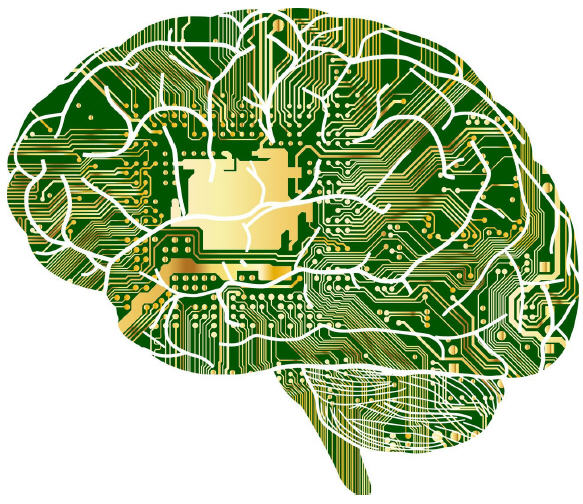博文
新研究表明我们的大脑使用量子计算
 精选
精选
||
新研究表明我们的大脑使用量子计算
诸平
据爱尔兰都柏林三一学院(Trinity College Dublin)2022年10月19日报道,新研究表明我们的大脑使用量子计算(New research suggests our brains use quantum computation)。
都柏林三一学院的科学家相信我们的大脑可以使用量子计算。他们的发现是在他们应用了一个用来证明量子引力存在的想法来探索人类大脑及其工作方式之后产生的。
测量的大脑功能也与短期记忆表现和意识相关,这表明量子过程(quantum processes)也是认知和意识大脑功能的一部分。
如果研究小组的研究结果能够得到证实——这可能需要先进的多学科方法——它们将增强我们对大脑如何工作以及大脑如何维持甚至治愈的总体理解。它们还可能有助于发现创新技术(innovative technologies)以及建造更先进的量子计算机。
三一学院神经科学研究所(Trinity College Institute of Neuroscience简称TCIN)的首席物理学家克里斯蒂安·克斯肯思(Christian Kerskens)博士与人合著了一篇研究论文,该论文2022年10月7日已经在《物理通讯杂志》(Journal of Physics Communications)网站发表——Christian Matthias Kerskens, David López Pérez. Experimental indications of non-classical brain functions. Journal of Physics Communications, 2022, 6(10): 105001. DOI: 10.1088/2399-6528/ac94be. Published 7 October 2022. 克里斯蒂安·克斯肯思说:“我们采用了一个想法,这个想法是为了证明量子引力的存在而开发的,通过实验,你可以用已知的量子系统(quantum systems),它们与一个未知的系统相互作用。如果已知系统会纠缠,那么未知系统也一定是量子系统。它避免了为我们一无所知的事物寻找测量设备的困难。”
“在我们的实验中,我们使用了‘脑水(brain water)’的质子自旋作为已知系统。‘脑水’是以液体的形式在我们的大脑中自然形成的,质子自旋可以通过磁共振成像(Magnetic Resonance Imaging简称MRI)来测量。然后,通过使用一种特殊的MRI设计来寻找纠缠的自旋,我们发现了类似心跳诱发电位的MRI信号,这是脑电图信号(EEG signals)的一种形式。脑电图测量大脑电流,有些人可能从个人经历或仅仅从电视上观看的医院剧中得知了这一点。”
像心跳诱发电位这样的电生理电位(Electrophysiological potentials)通常无法通过核磁共振成像检测到,科学家们认为他们只能通过核磁共振成像观察到这些电位,因为大脑中的核质子自旋是纠缠在一起的。
克里斯蒂安·克斯肯思博士补充道,“如果纠缠是唯一可能的解释,那么这就意味着大脑的活动过程一定与核自旋相互作用,从而调节了核自旋之间的纠缠。因此,我们可以推断出大脑的这些功能一定是量子的。
由于这些大脑功能也与短期记忆表现和意识相关,因此这些量子过程很可能是我们认知和意识大脑功能的重要组成部分。
量子大脑过程(Quantum brain processes)可以解释为什么我们在不可预见的情况、决策或学习新事物方面仍能胜过超级计算机。我们的实验在离薛定谔演讲厅只有50米远的地方进行,薛定谔在那里发表了他关于生命的著名思想,我们的实验可能会揭示生物学的奥秘,以及科学上更难理解的意识。”
本研究项目由爱尔兰科学基金会资助(Science Foundation Ireland from 2011-15: SFI-11/RFP.1/NES/3051),同时得到了三一学院神经科学研究所的支持。
上述介绍,仅供参考。欲了解更多信息,敬请注意浏览原文或者相关报道。
实现更大的纠缠:通向有用量子技术道路上的里程碑(Achieving greater entanglement: Milestones on the path to useful quantum technologies)
Recent proposals in quantum gravity have suggested that unknown systems can mediate entanglement between two known quantum systems, if the mediator itself is non-classical. This approach may be applicable to the brain, where speculations about quantum operations in consciousness and cognition have a long history. Proton spins of bulk water, which most likely interfere with any brain function, can act as the known quantum systems. If an unknown mediator exists, then NMR methods based on multiple quantum coherence (MQC) can act as an entanglement witness. However, there are doubts that today's NMR signals can contain quantum correlations in general, and specifically in the brain environment. Here, we used a witness protocol based on zero quantum coherence (ZQC) where we minimized the classical signals to circumvent the NMR detection limits for quantum correlation. For short repetitive periods, we found evoked signals in most parts of the brain, whereby the temporal appearance resembled heartbeat-evoked potentials (HEPs). We found that those signals had no correlates with any classical NMR contrast. Similar to HEPs, the evoked signal depended on conscious awareness. Consciousness-related or electrophysiological signals are unknown in NMR. Remarkably, these signals only appeared if the local properties of the magnetization were reduced. Our findings suggest that we may have witnessed entanglement mediated by consciousness-related brain functions. Those brain functions must then operate non-classically, which would mean that consciousness is non-classical.
https://blog.sciencenet.cn/blog-212210-1360505.html
上一篇:红叶与硕果
下一篇:纠缠物质波干涉仪:现在是幽灵翻倍
